Poori recipe – Simple puri made with whole wheat flour, salt and semolina. It’s not magic to make puffed pooris, everyone can do it only with few tips. This post is for beginners, with a detailed explanation.
How to make the puffed Poori?
Everybody loves poori and it is simple to make it compared to rotis. I use iron poori pressure to make it even faster. Buy one if you don’t have one already, definitely it saves a lot of time. Rolling is also fine but you have to take care to avoid sticking and tearing of dough. While pressing or rolling if it sticks/tears then you may not get puffed poori. Make sure to apply oil while rolling. Also, I use organic whole wheat flour, hence it looks a bit darker. You can mix wheat and all-purpose flour/maida to make pooris.
Sooji is the main ingredient to get puffed poori recipe. This semolina/rava holds the shape by giving enough stiffness to the Poori while frying and helps it to stay puffed for a long time.
I always make poori or chapathi dough by adding water first and mixing dough gradually. This way is easier for me to bring the correct textured dough. You can follow the other way of taking the required dough and adding water to knead little by little. Either way works good and our ultimate aim is to make a non-sticky dough.
Serve this with tasty Poori masala.
How to make Poori stay puffed?
For most of us, making puffed poori is easy but when you want to save it for a while before everyone comes to the table, comes the real trouble. There is no magic solution to make the poori stay in its shape. Atleast not at home! You might have seen in roadside food shops, the pooris stacked one on top of another without pressing the bottom ones. First, they make pooris with maida(bleached refined wheat flour), second, they fry it for a longer time to make it almost crispy and next, they use lots of semolina. At home, if you like the pooris to be stiff for a longer time increase the sooji quantity and do not stack one on another as far as possible. I can hear you! A poori is a poori puffed or not! and who waits until after everything is done. After all, at homes, our pooris fly from pan to plate piping hot 😉
Look at the recipe with stepwise pictures and tips below. Also, check out the video uploaded in the recipe card, and please subscribe to my youtube channel if you like to receive interesting recipe videos 🙂
Ingredients:
To make the dough:
- 2 cups whole wheat flour
- 1 tbsp rava/sooji
- 1 medium glass of water approx. 200ml (preferably warm water)
- ½ tsp salt
- 1 tsp oil
To fry:
- Cooking oil enough to deep fry
Puffed poori recipe:
- In a mixing bowl, take rava or sooji. Add salt.
- Pour the warm water and soak rava for five minutes. This is a very important ingredient.
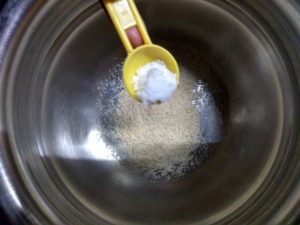
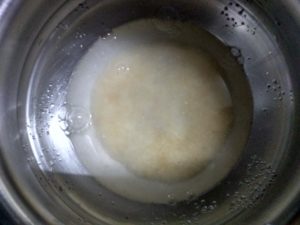
- Once rava becomes soft, add the wheat flour little by little and start kneading.
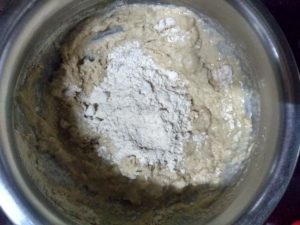
- If you feel the dough is too sticky and soft, add some more flour and knead again. I recommend using fingers instead of a spatula to get desired results.
- Make the tight, stiff dough at the same time not too hard. If it is soft like chapati dough, then poori may not puff and becomes like papad.
- Add oil; knead again to make a non-sticky dough. Apply some oil and cover with a lid, keep aside for 15 minutes.
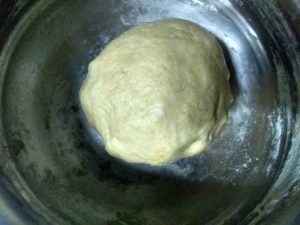
How to fry puri:
- Make small-sized balls (big lemon size). Roll or press them by applying few drops of oil into a thick circle. Do not roll very thin.
- Heat enough oil to deep fry pooris.
- Check the temperature by dropping one tiny bit of dough. If it rises up immediately then the oil is in perfect heat.
- Drop the rolled dough circle carefully into the hot oil.
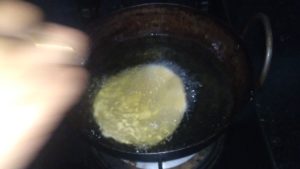
- Press gently and poori starts puffing up as shown.
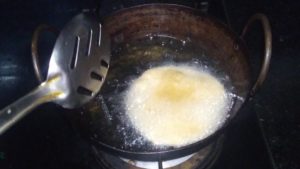
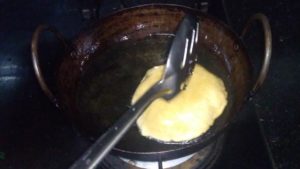
- Flip to the other side.
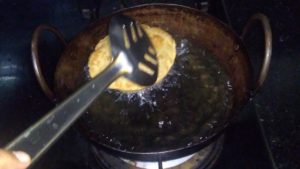
- Each poori takes just less than a minute to cook if the oil is in perfect heat.
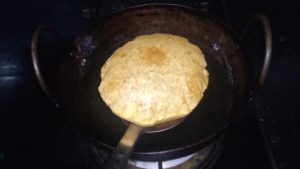
- Strain out from oil.
- Serve hot with Poori masala. Potato masala/Poori bhaji is the perfect match.
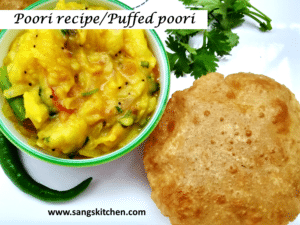
Tips/Notes:
- Always cook poori in high flame. If the oil is not incorrect heat then poori absorbs extra oil and becomes soggy.
- The texture of the dough is important to get puffed poori. Stiff and tight, oiled dough.
- Do not use flour to roll. Instead, use oil to press/roll.
- Beginners, please be careful while handling hot oil. Slowly slide the dough from the corner of the frying kadai.
- DO NOT SKIP ADDING RAVA. This is the most important magic ingredient to get puffed pooris and to retain the puffiness for a longer time.
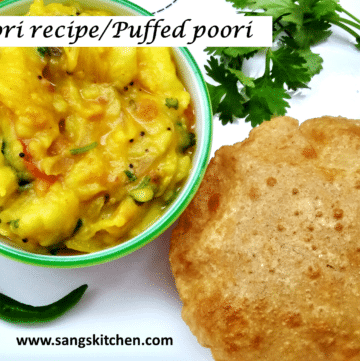
Poori recipe | How to make puffed Poori | Puri recipe
Ingredients
To make dough:
- 2 cups whole wheat flour
- 1 tbsp rava/sooji
- 1 medium glass of water approx. 200ml (preferably warm water)
- ½ tsp salt
- 1 tsp oil
To fry:
- Cooking oil enough to deep fry
Instructions
Recipe:
- In a mixing bowl, take rava or sooji . Add salt.
- Pour the warm water and soak rava for five minutes. This is very important ingredient. Once rava becomes soft, add wheat flour little by little and start kneading.
- If you feel dough is too sticky and soft, add some more flour and knead again. I recommend using fingers instead of spatula to get desired results.
- Make tight, stiff dough at the same time not too hard. If it is soft like chapati dough, then poori may not puff and becomes like papad.
- Add oil; knead again to make non-sticky dough. Apply some oil and cover with lid, keep aside for 15 minutes.
How to fry poori:
- Make even sized balls (big lemon size). Roll or press them by applying few drops of oil into a thick circle. Do not roll very thin.
- Heat enough oil to deep fry pooris.
- Check the temperature by dropping one tiny bit of dough. If it rises up immediately then oil is in perfect heat.
- Drop the rolled dough circle carefully into hot oil.
- Press gently and poori starts puffing up as shown. Flip and fry the other side.
- Each poori takes just a minute to cook, if oil is in perfect heat. Remove from the oil. Use slotted spoon to wiggle out excess oil.
- Serve hot with Poori masala. Potato masala/Poori bhaji is the perfect match.
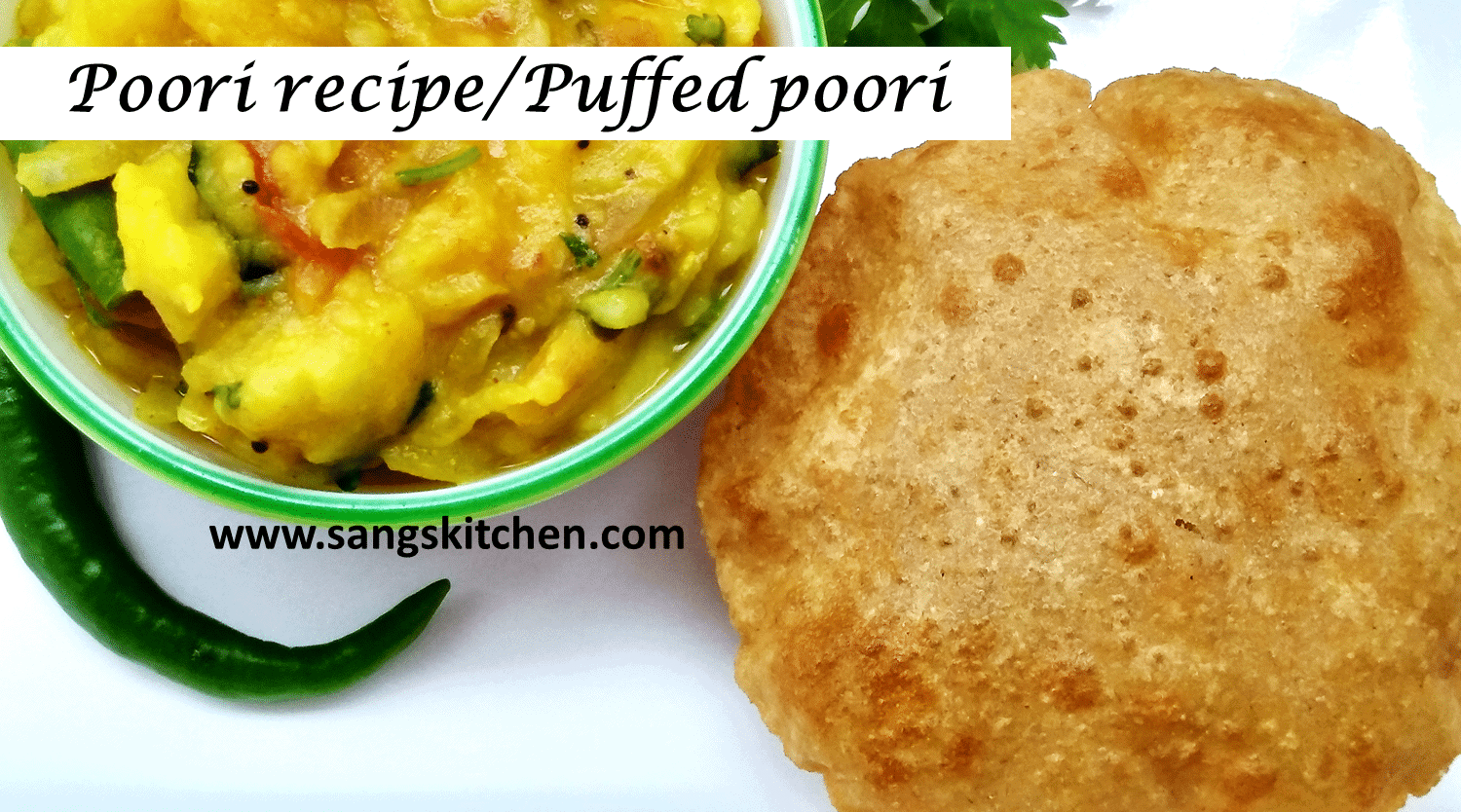
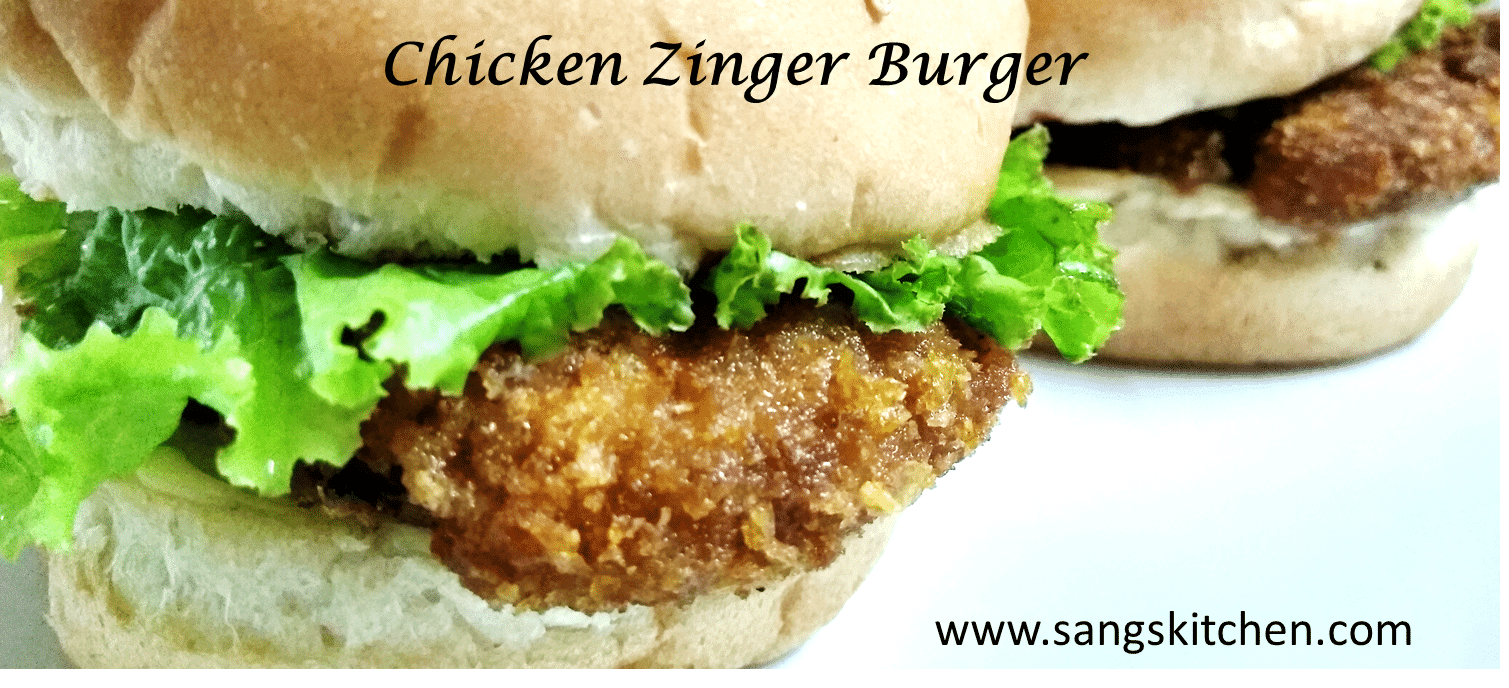
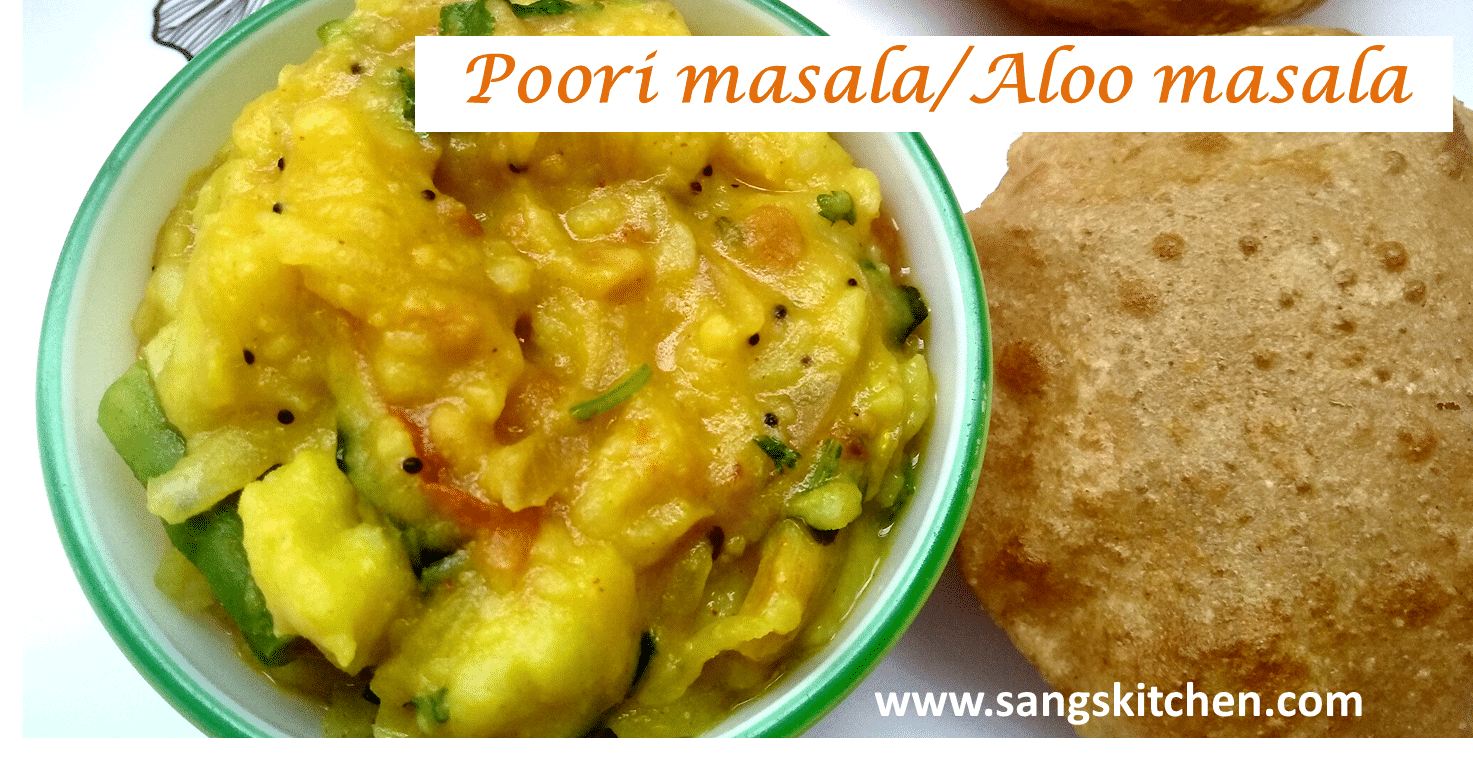


Good receipe
Pingback: Poori masala | Potato masala | How to make Poori masala recipe
Pingback: Ragi roti | Ragi rotti | Finger millet roti | Millet recipes | Sangskitchen
Pingback: Idli with idli rava | Idli with rice rava | How to make idli batter with idli rava | How to make idli batter with idli rava
Pingback: Semiya upma recipe | Vermicelli upma recipe | Sangskitchen